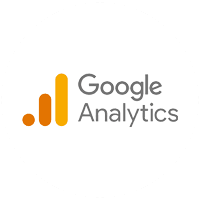Unlocking the Power of Google Analytics: A Comprehensive Guide
Introduction
In today’s digital age, understanding the behavior of your online audience is crucial for the success of any business or website. That’s where Google Analytics comes into play. This powerful tool provides invaluable insights into website traffic, user interactions, and much more. In this article, we will delve into the world of Google Analytics and explore how you can leverage its features to enhance your online presence and make informed decisions.
What is Google Analytics?
Google Analytics is a comprehensive web analytics service offered by Google that allows website owners and digital marketers to track and analyze various aspects of their online presence. From understanding user behavior to measuring the effectiveness of marketing campaigns, Google Analytics provides a wealth of data-driven insights that can shape your online strategy.
Setting Up Google Analytics for Your Website
Before you can unlock the potential of Google Analytics, you need to set it up for your website. The process involves creating an account, generating a tracking code, and integrating it into your website’s code. This step-by-step process ensures that Google Analytics accurately captures data from your website visitors.
Navigating the Google Analytics Dashboard
Upon logging into your Google Analytics account, you’ll be greeted by a comprehensive dashboard that provides an overview of key metrics. The dashboard is designed to give you a snapshot of your website’s performance, including metrics such as sessions, users, and pageviews. Familiarizing yourself with the dashboard is the first step in harnessing the power of Google Analytics.
Key Metrics and Terminology
To effectively utilize Google Analytics, it’s essential to understand the fundamental metrics and terminology. Sessions represent individual visits to your website, while users indicate the number of unique visitors. Pageviews track the total number of pages viewed, providing insights into user engagement.
Understanding Sessions, Users, and Pageviews
A session is a single visit to your website, encompassing various interactions. Users are distinct individuals who access your site, and pageviews indicate the pages they’ve viewed. These metrics together offer a comprehensive view of user activity on your website.
Bounce Rate and Its Significance
The bounce rate is a critical metric that measures the percentage of visitors who navigate away from your site after viewing only one page. A high bounce rate could indicate that your content or website design needs improvement to encourage visitors to explore further.
The Importance of Average Session Duration
Average session duration reveals the average amount of time users spend on your website during a session. This metric is indicative of user engagement and the appeal of your content. Longer session durations generally suggest a more captivating user experience.
Analyzing Audience and Demographics
Understanding your audience is pivotal for tailoring your content and marketing strategies. Google Analytics provides valuable insights into the demographics of your visitors, allowing you to create targeted campaigns.
Audience Overview: Who’s Visiting Your Site?
The Audience Overview report provides a snapshot of your website’s visitors. It includes data on user sessions, pageviews, bounce rate, and more. Additionally, you can explore metrics related to user locations, devices, and browsers.
Unveiling User Locations and Languages
Knowing the geographical locations of your users can help you tailor content and promotions to specific regions. Google Analytics allows you to view the countries, cities, and even languages of your audience, enabling localized marketing efforts.
Delving Deeper with Interests and Behavior Reports
Google Analytics also provides insights into user interests and behaviors. By analyzing the Affinity Categories and In-Market Segments reports, you can gain a deeper understanding of your audience’s preferences and purchasing intent.
Tracking Website Traffic Sources
Understanding where your website traffic originates is essential for optimizing your online presence. Google Analytics offers comprehensive reports that break down traffic sources and their impact.
Organic, Direct, and Referral Traffic
Organic traffic originates from search engines, direct traffic represents visitors who typed your URL, and referral traffic comes from external websites. Analyzing these sources helps you identify which channels are driving the most visitors.
The Role of Social Media and Campaign Tracking
Social media platforms play a crucial role in driving traffic. Google Analytics allows you to track the effectiveness of your social media campaigns, providing insights into the platforms that generate the most engagement.
Unveiling Content Performance
The performance of your website’s content can significantly impact user engagement and conversions. Google Analytics offers tools to evaluate how well your pages are performing.
Understanding Page and Blog Post Popularity
The Pageviews and Unique Pageviews metrics help you identify which pages and blog posts attract the most attention. This information is invaluable for refining your content strategy and focusing on topics that resonate with your audience.
Analyzing Exit Pages for Improved Engagement
Exit pages indicate where visitors leave your site. By identifying exit pages with high traffic, you can optimize these pages to encourage users to explore more of your content before departing.
E-Commerce and Conversion Tracking
For businesses with an online store, tracking e-commerce performance and conversions is vital. Google Analytics provides features to monitor sales, transactions, and user behavior.
Setting Up E-Commerce Tracking
Setting up e-commerce tracking allows you to monitor product sales, revenue, and conversion rates. This feature provides detailed insights into which products are driving revenue and helps you optimize your online store.
Monitoring Goals and Conversions
Goals in Google Analytics are specific actions you want users to take on your site, such as signing up for a newsletter or completing a contact form. Tracking these goals helps you measure the success of your website and marketing efforts.
Utilizing Custom Reports and Dashboards
Custom reports and dashboards enable you to tailor Google Analytics to your specific needs. You can create visualizations that focus on the metrics most relevant to your business.
Crafting Reports Tailored to Your Needs
Custom reports allow you to select the dimensions and metrics that matter most to your business. Whether you’re interested in tracking specific pages or user segments, custom reports provide a tailored view of your website’s performance.
Creating Dashboards for At-a-Glance Insights
Dashboards provide a consolidated view of key metrics and reports, allowing you to monitor your website’s performance at a glance. You can customize dashboards to display the information that’s most important to you.
Mobile Analytics: A Must-Have in Today’s World
With the rise of mobile devices, optimizing your website for mobile users is essential. Google Analytics offers insights into mobile user behavior and allows you to analyze mobile app performance.
Mobile User Behavior and Optimization
Mobile analytics reveal how users interact with your site on mobile devices. By understanding mobile user behavior, you can make informed decisions to enhance the mobile experience.
Mobile App Analytics: Beyond the Website
If you have a mobile app, Google Analytics can track user interactions within the app. This data helps you understand user engagement and identify areas for improvement.
Utilizing Behavior Flow for Enhanced User Experience
Behavior Flow provides a visual representation of the paths users take through your site. This feature highlights the most common user journeys and points of drop-off, enabling you to optimize the user experience.
Integrating Google Analytics with Other Tools
Integrating Google Analytics with other tools enhances your data insights and allows for more comprehensive analysis.
Google Search Console: Bridging the Gap
Integrating Google Analytics with Google Search Console provides a holistic view of your website’s search performance. You can identify search queries that drive traffic and optimize your content accordingly.
Connecting Google Ads for Data-Driven Campaigns
Linking Google Analytics with Google Ads allows you to track the effectiveness of your advertising campaigns. You can measure conversions, analyze ad performance, and refine your marketing strategies.
Ensuring Data Privacy and Compliance
In an era of data privacy regulations, it’s crucial to ensure your analytics practices comply with the law.
The Impact of GDPR on Analytics
The General Data Protection Regulation (GDPR) has implications for how you collect, store, and use user data. Google Analytics offers features to assist with GDPR compliance, such as data retention controls.
Implementing Data Anonymization and Consent Forms
To prioritize user privacy, Google Analytics provides options for data anonymization and allows you to incorporate consent forms for data collection. This helps build trust with your audience while adhering to privacy regulations.
Advanced Tips and Tricks for Power Users
For those seeking to maximize the potential of Google Analytics, there are advanced techniques to explore.
Event Tracking: Monitoring User Interactions
Event tracking allows you to monitor specific user interactions, such as clicks, downloads, and video views. By setting up events, you gain deeper insights into user behavior and engagement.
Custom Dimensions and Metrics for Deeper Insights
Custom dimensions and metrics enable you to track data beyond the default parameters. This feature provides a high level of customization, allowing you to analyze user behavior in more detail.
Conclusion: Harnessing the Insights of Google Analytics
In the ever-evolving landscape of the digital world, Google Analytics serves as a beacon of insight. By understanding the nuances of user behavior, traffic sources, and content performance, you can make informed decisions that drive your online success. Whether you’re a business owner, marketer, or website administrator, Google Analytics empowers you with the data you need to optimize your digital strategy and deliver an exceptional user experience.
FAQs (Frequently Asked Questions)
- Is Google Analytics free to use? Yes, Google Analytics offers both free and paid versions. The free version provides robust features suitable for most websites, while the paid version, Google Analytics 360, offers advanced functionalities.
- Can I use Google Analytics for my mobile app? Yes, Google Analytics can track user interactions within your mobile app, providing valuable insights into user behavior and engagement.
- How can I link Google Analytics with my Google Ads account? You can link Google Analytics with Google Ads by enabling auto-tagging in your Google Ads account settings. This allows for seamless data sharing between the two platforms.
- What is the significance of bounce rate? Bounce rate indicates the percentage of visitors who leave your site after viewing only one page. A high bounce rate may suggest that visitors are not finding the content relevant or engaging.
- How can I ensure GDPR compliance with Google Analytics? Google Analytics offers features such as data retention controls and data anonymization to assist with GDPR compliance. Additionally, you can implement consent forms to obtain user permission for data collection.

